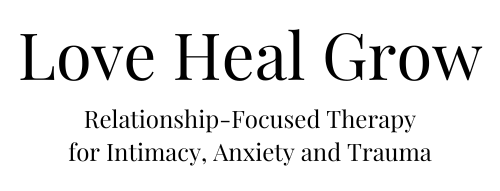
In the United States, approximately 6% of adults have PTSD. This is not an incredibly large percentage, but it is definitely not insignificant. For those of you who may be unfamiliar with the condition, PTSD stands for post-traumatic stress disorder. This mental health issue can develop in anyone after a traumatic event has happened to them. This traumatic event could have been an accident, natural disaster, fire, physical abuse, death of a loved one, sexual assault, military combat, or a number of other events.
When people ask what causes PTSD, there is really only one answer. Traumatic experiences cause PTSD. We know this, but we do not know why some people get PTSD and others do not. Unfortunately, this makes it even harder to diagnose individuals with PTSD — which we’ll dive into later.
Symptoms of PTSD
Like those with other types of disorders, individuals with post-traumatic stress disorder can exhibit several different symptoms. Some will exhibit multiple symptoms, and some will exhibit symptoms outside of the common ones we are listing below. Individuals with PTSD will exhibit at least one of the following symptoms.
Intrusive Memories and Thoughts
People who suffer from PTSD often experience recurring memories of the traumatic event that they experienced. They may also experience flashbacks of the event that make them constantly relive it or have nightmares about it.
Avoidance
It is quite common for individuals with PTSD to avoid people, places, and things that may remind them of the traumatic event that they experienced. This may mean avoiding certain activities, friends, or even parts of town. These individuals may also wish to avoid talking or thinking about the event — especially in the company of others or areas that remind them of it.
Negative Feelings and Thoughts
Individuals with PTSD may feel negative, angry, sad, guilty, distrustful, or even emotionally numb. They may also feel hopeless about the future, have trouble keeping up with relationships, and isolate themselves from friends and family.
Feeling On Edge
People with PTSD typically find it challenging to relax or enjoy things they used to do in the same way. Some of this comes from the fact that they are often more frequently in “fight or flight “mode. This can also affect these individuals’ ability to sleep peacefully at night as well. Additionally, these individuals may feel more easily startled or frightened or exhibit more outbursts of anger or irritation.
Why Is PTSD Overlooked?
Realistically, the best way to understand why PTSD gets overlooked so often is by understanding how it is diagnosed. Unfortunately, like many conditions rooted in the mind — like anxiety or depression — no blood test or scan can diagnose post-traumatic stress disorder. Because of this, diagnosing someone with PTSD can be challenging to do. But unfortunately, this is not the only reason many individuals are not diagnosed with PTSD.
Another reason why so many people’s PTSD gets overlooked is actually by their own doing — whether intentionally or not. The thing is, many of us do a lot to hide our problems from our loved ones.
Maybe we have found ways to avoid triggers in our daily life to appear fully functional to anyone looking at us. Perhaps we are afraid of others valuing us less if we tell them what happened. Maybe we fear there will be consequences if we tell someone about what happened — this is especially common in individuals suffering from PTSD after a sexual assault. Or maybe we simply think that what we went through was our fault or that we should have seen it coming.
These are just some things we do to hide our suffering from others. Unfortunately, this leads to many missed PTSD diagnoses and makes it harder for those individuals to get the help they need to best cope with their trauma.
What Are the Most Overlooked Symptoms of PTSD?
Now, we’ve mentioned that PTSD can look different in each person. While this is true, there are some symptoms that many people dismiss altogether or chalk up to being a part of another mental health issue rather than PTSD. For example, individuals who display the following four symptoms may be more likely to not be diagnosed with PTSD even if they display other, more typical PTSD symptoms because they are misdiagnosed with another mental health issue instead.
These symptoms are:
- Mood swings or lashing out
- Disinterest in relationships or hobbies
- Sleep issues or sleep deprivation
- Trouble focusing on tasks or learning new skills
If you have experienced a traumatic event and want some support and guidance on coping with the trauma, talking to a mental health professional — like a therapist or counselor — can be an excellent option. A therapist can help you navigate this challenging time and help you learn to process and overcome your trauma so that you can live your life as you want. So, if you want personalized guidance from a therapist, please do not hesitate to reach out to us today at Love Heal Grow.





